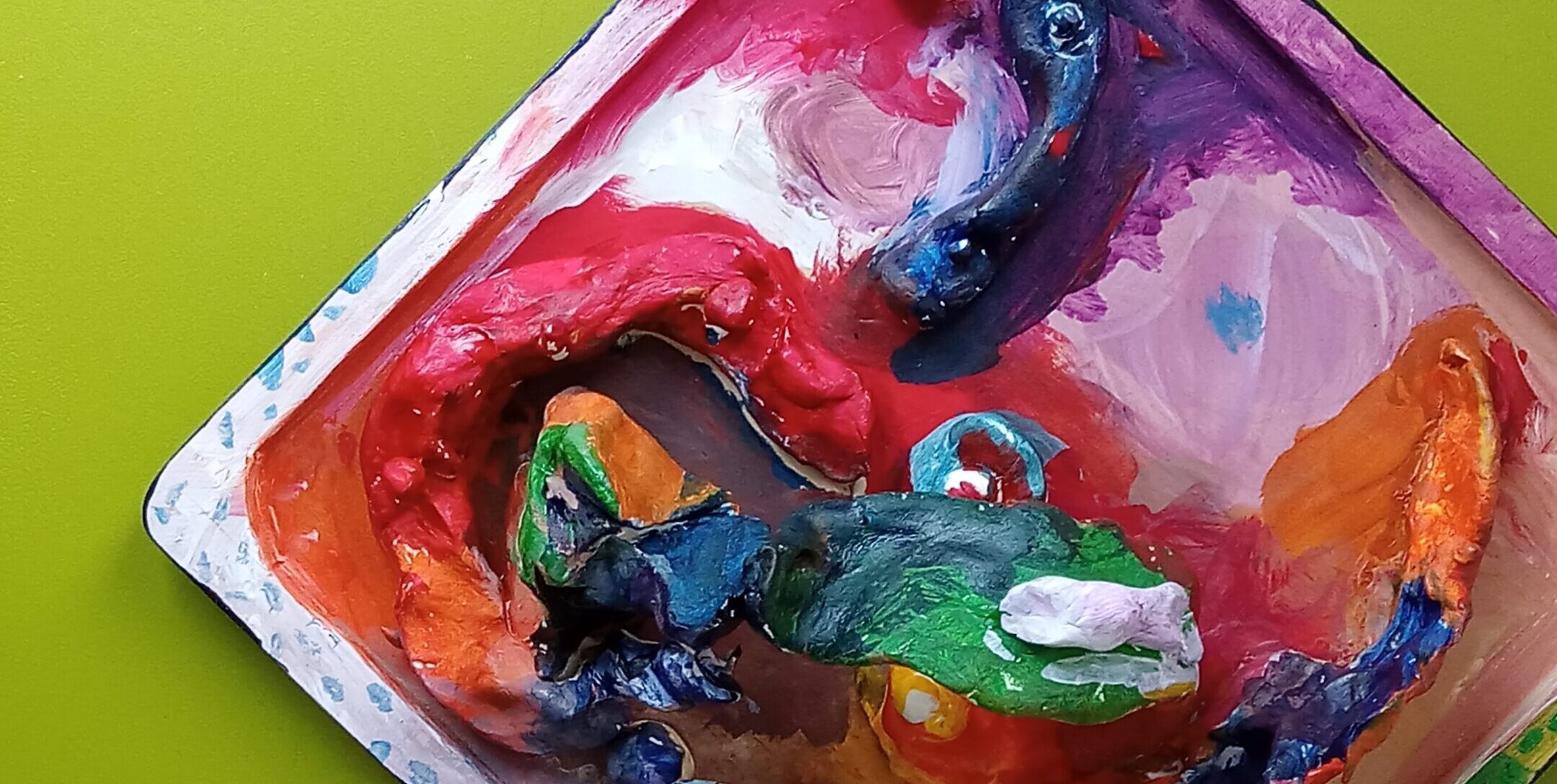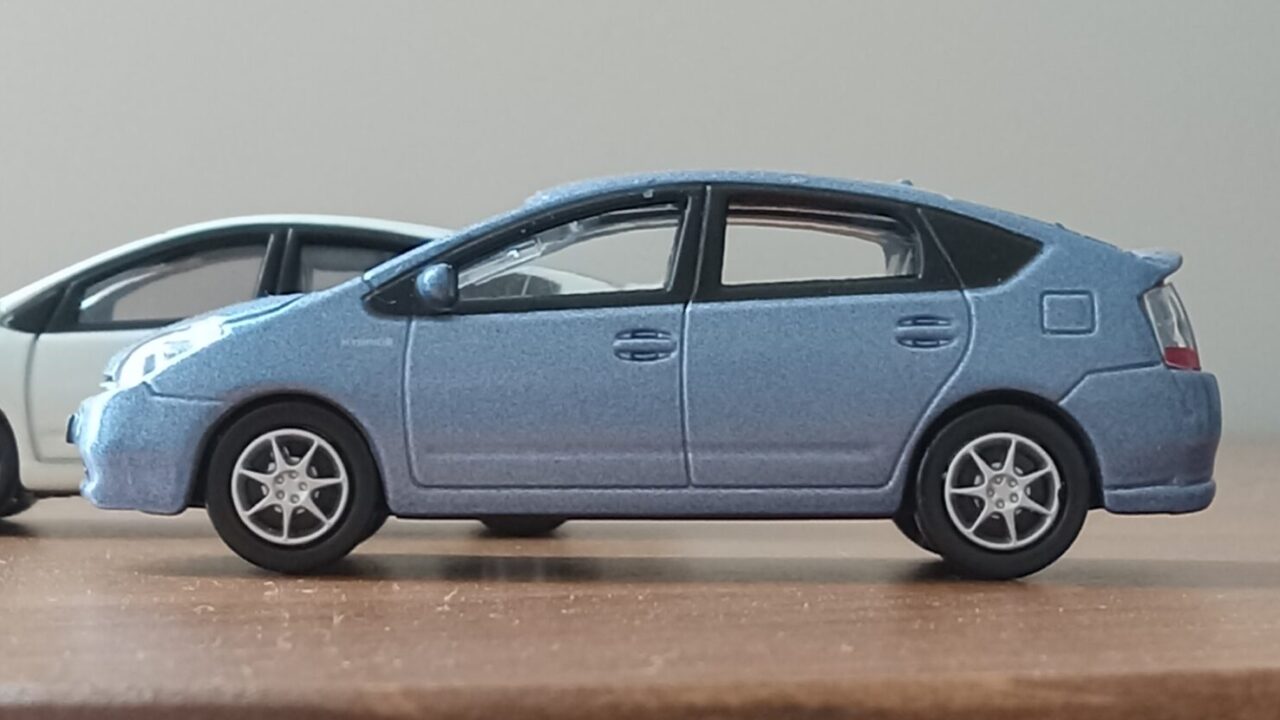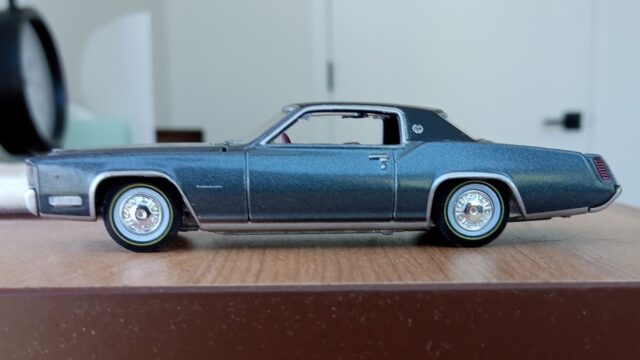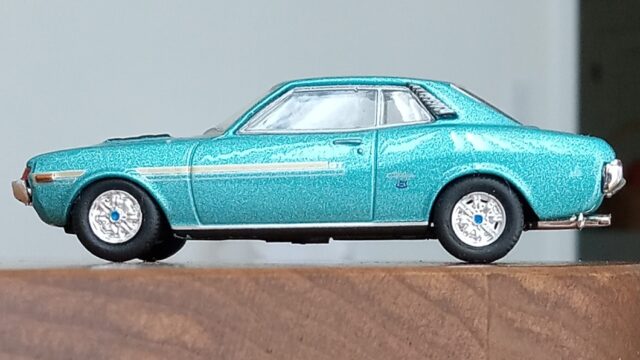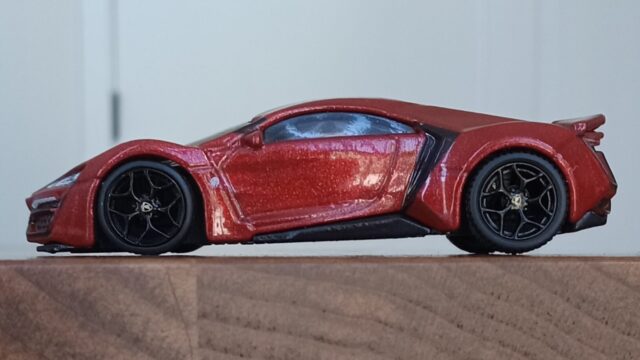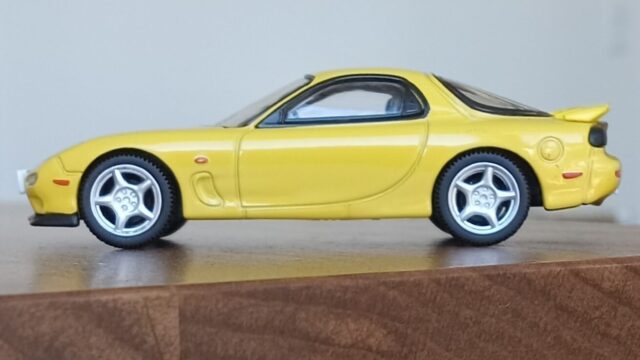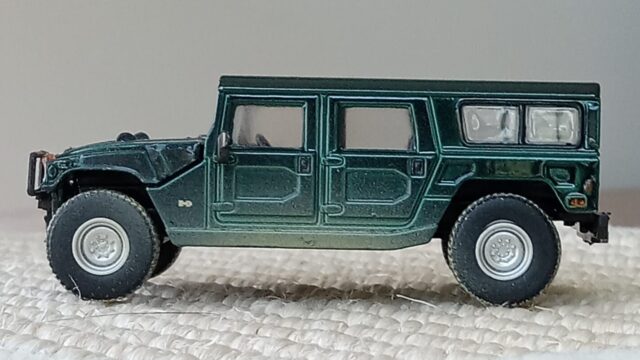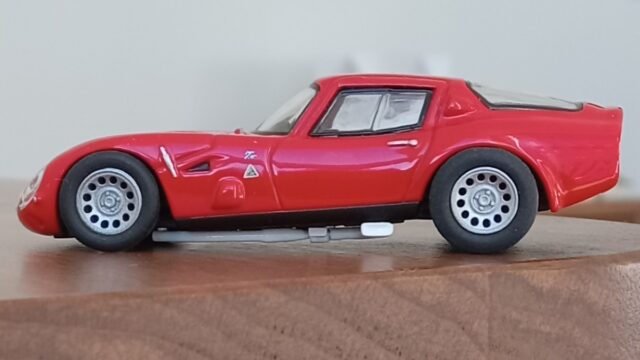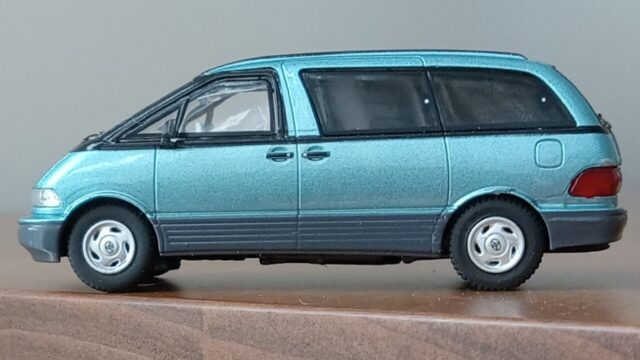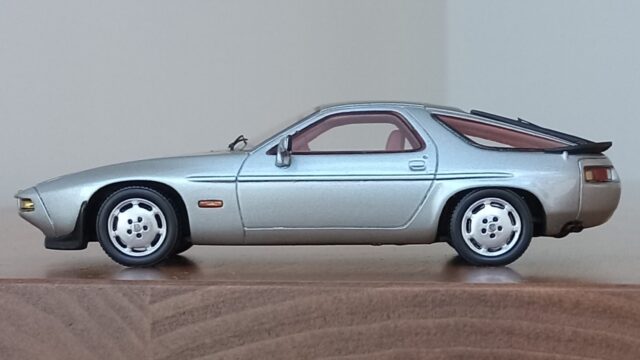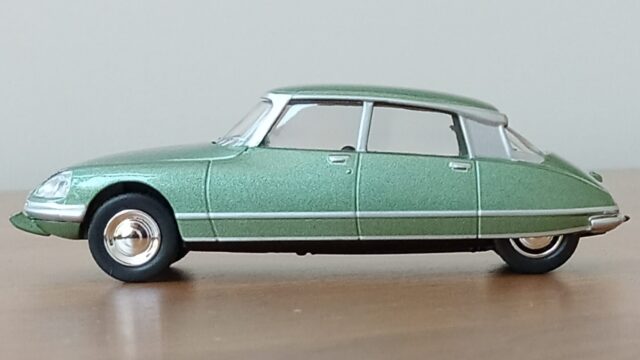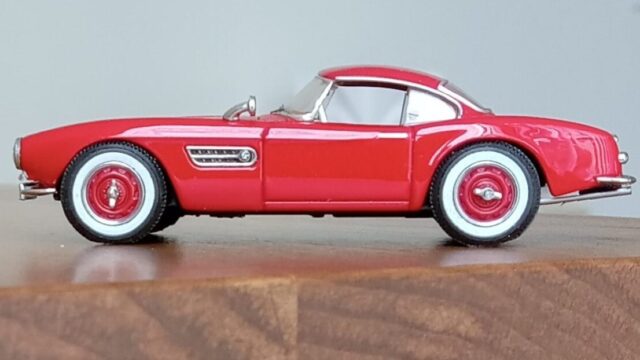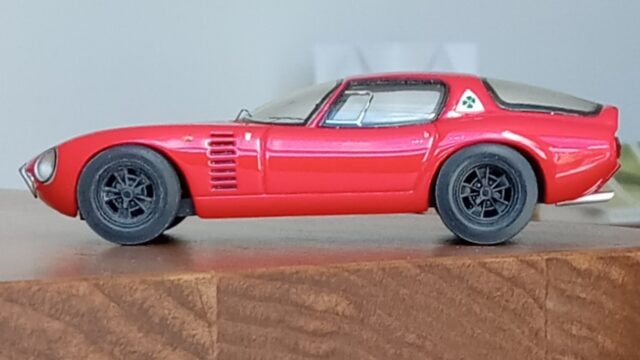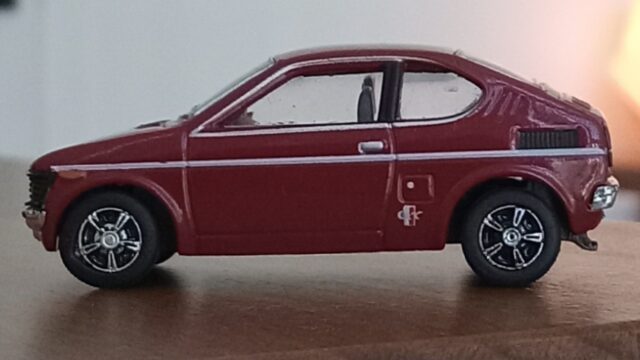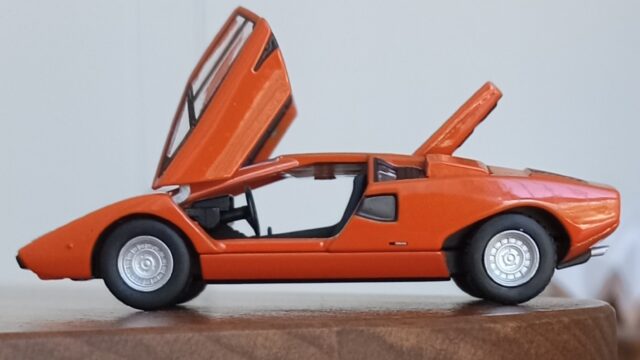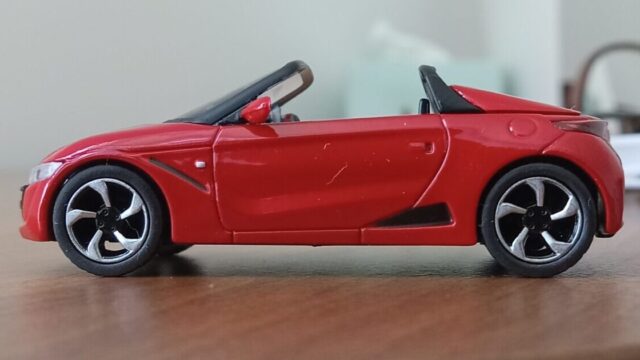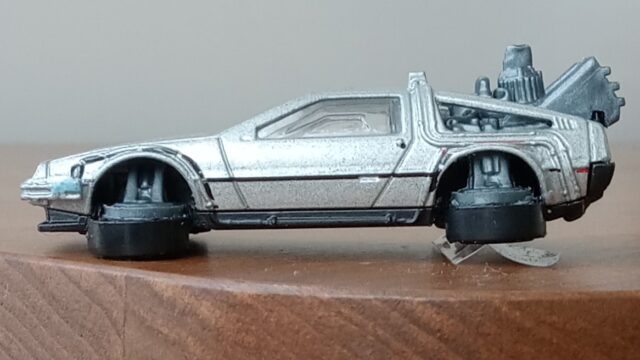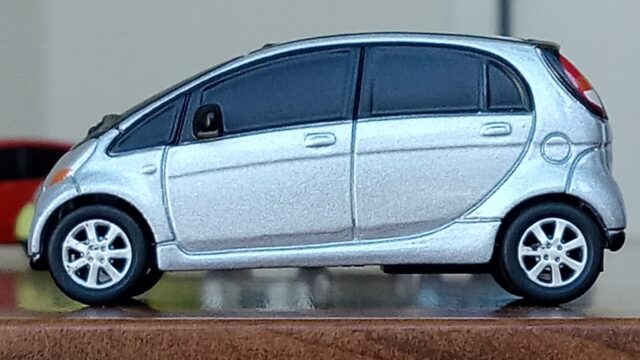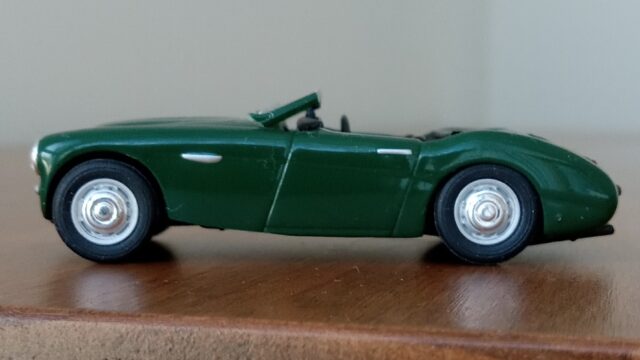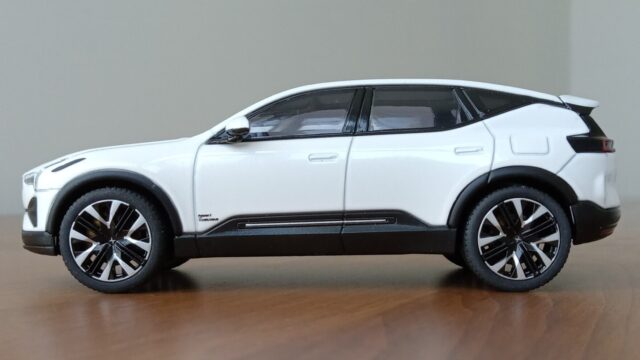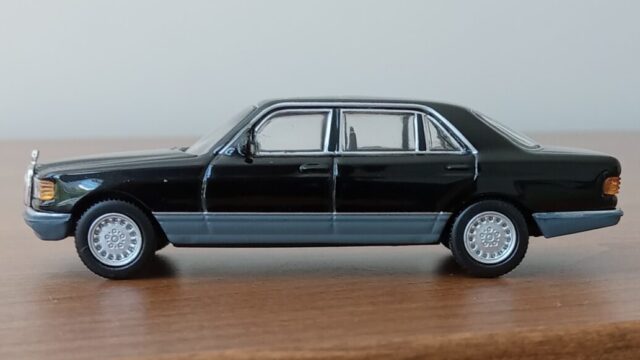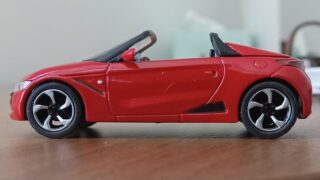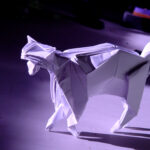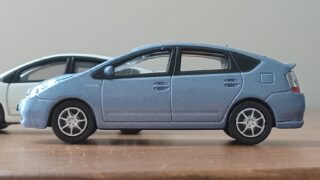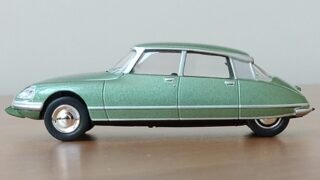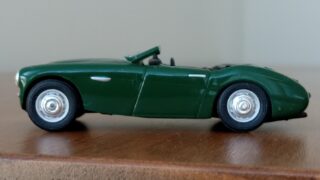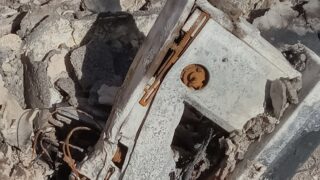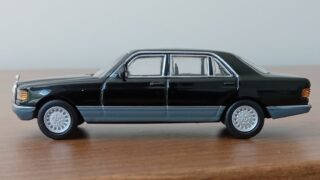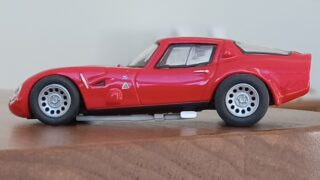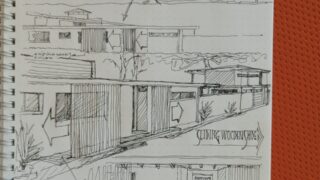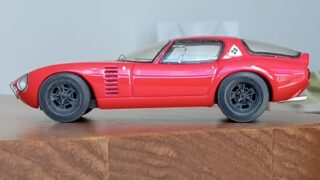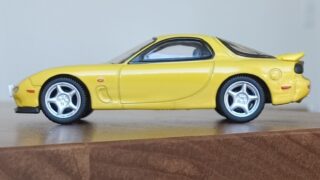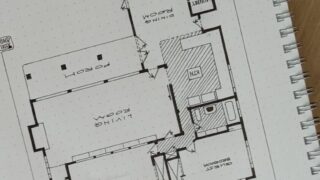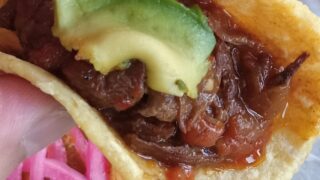第6位:トヨタ・プリウス(2代目)おにぎりデザイン
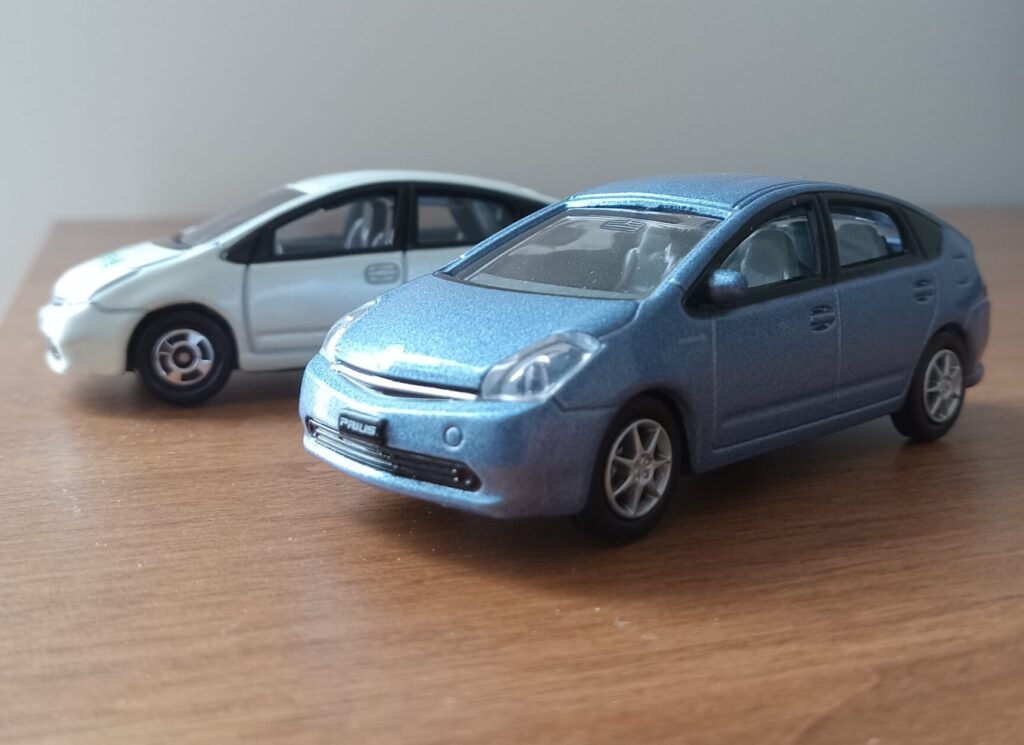
私にとっての2代目プリウスは、
『未来から来た三角おにぎり』
というよりは、
『完璧なリア、スリークオータービューの持ち主』
イコール=
『それまで好きだった、ホンダ、CR-Xのお兄さん』
といった感じで、
2005年から2020までの15年間を共にした、愛車でもあり、
今でももう一度乗りたい車です。
乗っていた毎日、自分の車に斜め後ろから近づくたびに、その角度からのデザインにほれぼれして、にやにやしておりました。
西海岸ではいまだにフリーウエイなどで、状態のいい2代目プリウスに遭遇しますが、後方から接近するときのドキドキ感は健在です。
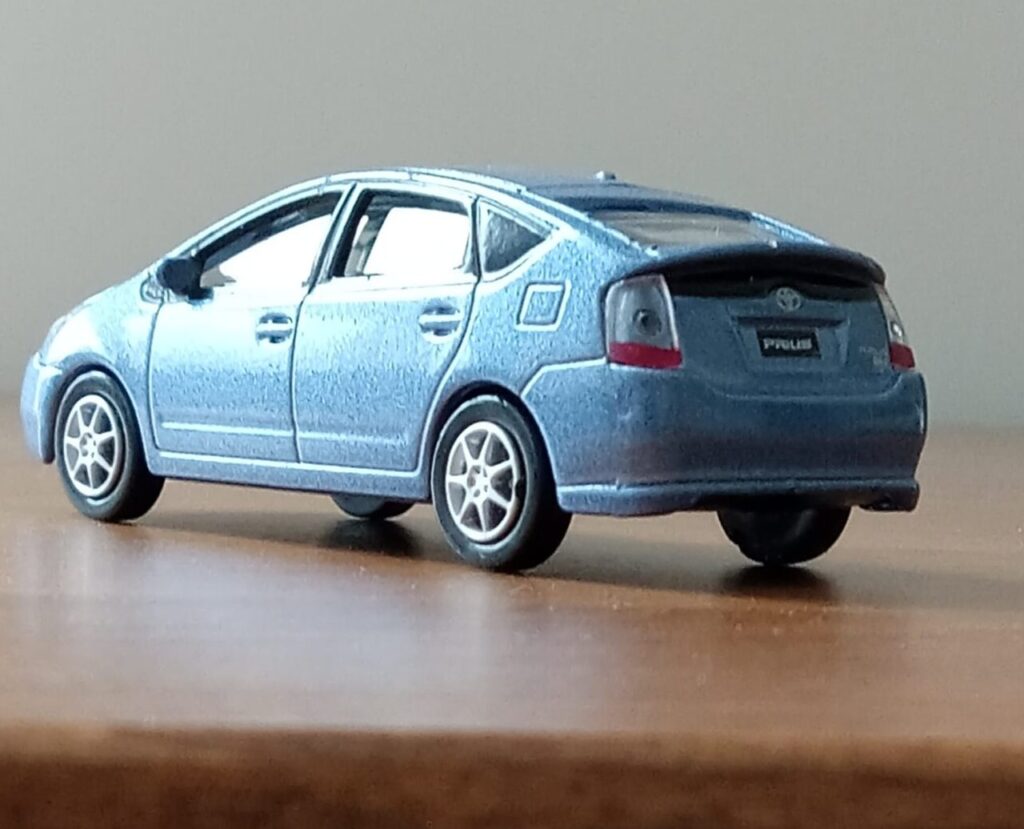 (パルック製1/60 トヨタプリウス 10周年記念エディション)
(パルック製1/60 トヨタプリウス 10周年記念エディション)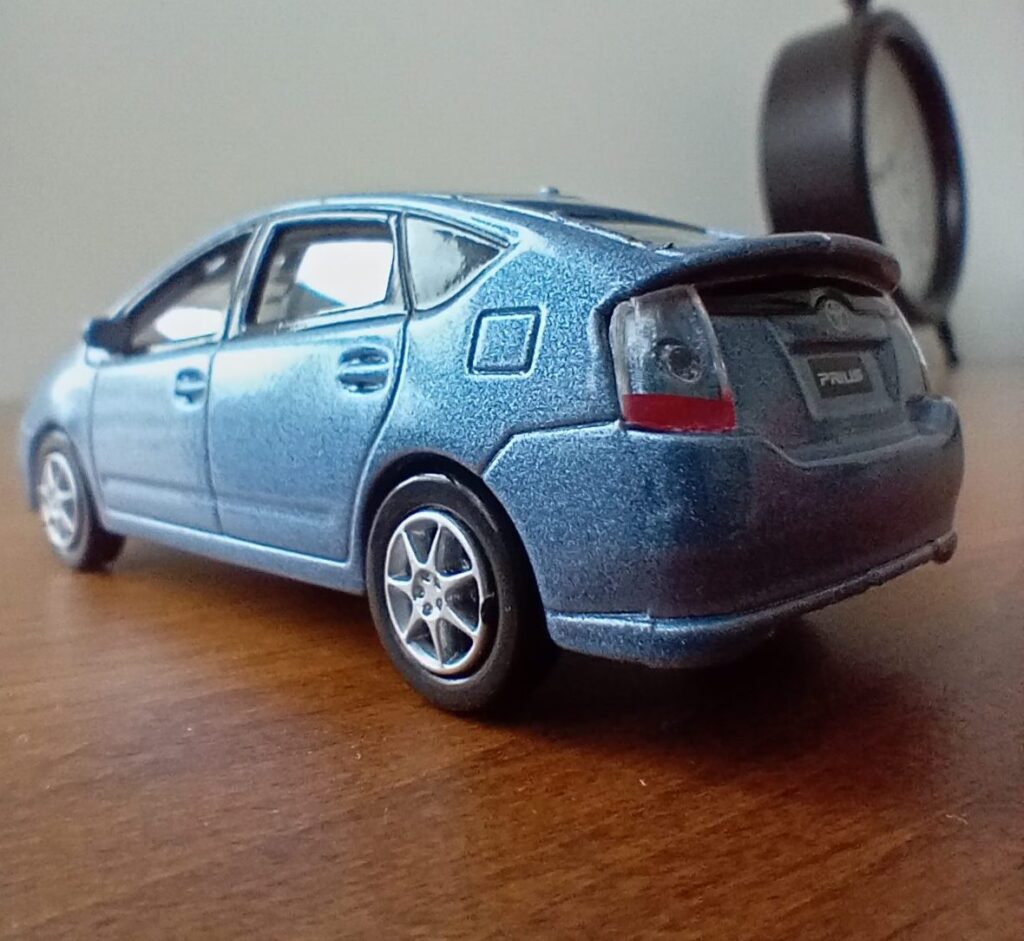
デザイン・ベスト10リスト
こちらが私が勝手に考えました、
自動車デザイン・ベスト10リストとなっております。
第10位:BMW 507, 1956 ————————ーーー(シルバー+同色ハードトップ)
第9位:AMゼネラル ハマーH1, 1992 ——ー(軍用ウッドランド・カモフラージュ)
第8位:MB 560 SEL, W126型, 1979 ————ーー(黒とブルーグレーの2トーン)
第7位:キャデラック・エルドラド,1967 (メタリック・ブルーに黒のレザートップ)
第6位:トヨタ プリウス, 2003 (2代目)————————–(シーサイド・パール)
第5位:ホンダ S660, 2015 ————————————— (スター・ホワイトパール)
第4位:ポルシェ 928,1978 ————-(ライトブルー・メタに格子パターンの内装)
第3位:シトロエン DS23 Pallas, 1973 ————————(シャンペーン・ゴールド)
第2位:ランボルギーニ・カウンタック LP400, 1974 ——————ーー (オレンジ)
第1位:オースチン・ヒーレー 100/4 (BN/1), 1953 –(アイボリーと濃紺の2トン)
授賞の理由(客観視点で)
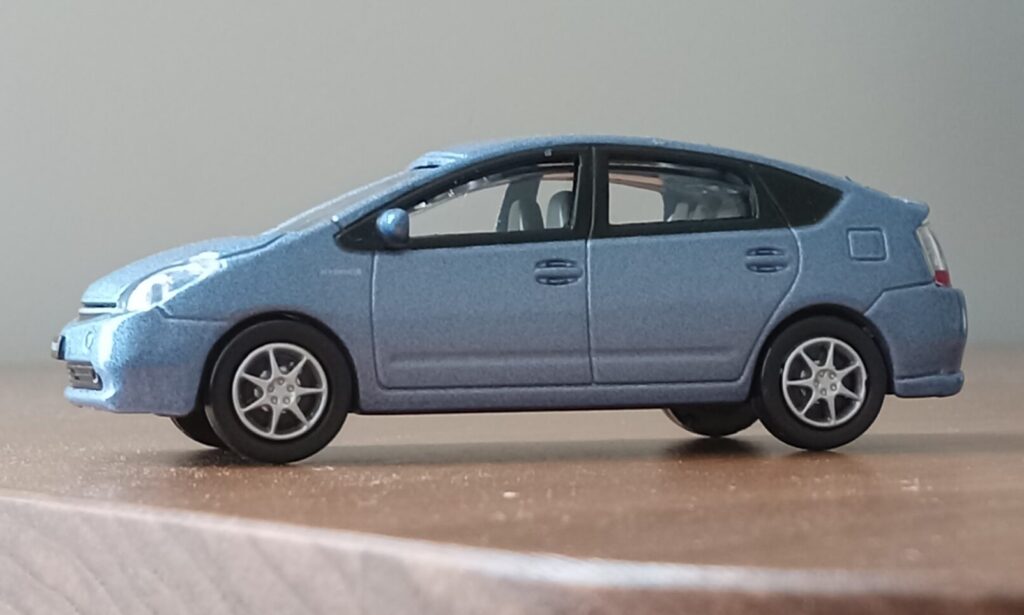
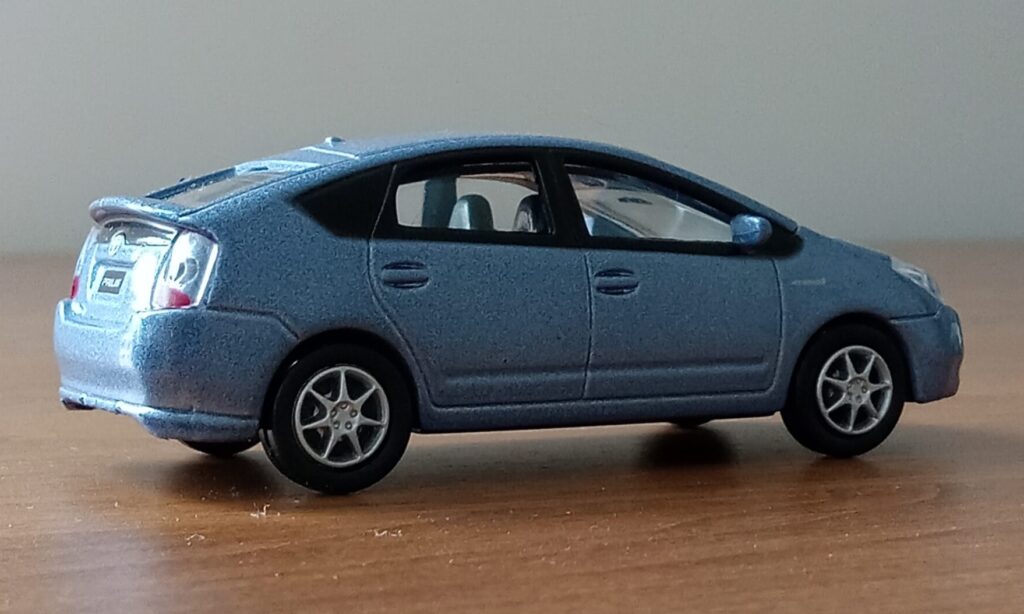
初代のセダンタイプからがらりと5ドア、ハッチバックスタイルにイメージチェンジした2代目プリウスは、さらなるハイブリッドシステムの熟成を助けるためにも、空力性能を徹底的に磨き上げ、さらにはプラットフォームの徹底的な見直しも併せて、米国トヨタの最上級車、アバロンに迫るほどの巨大な室内空間を獲得しました。(2003年『グッドデザイン大賞』を受賞)
結果的に2代目プリウスは大成功をおさめ、生産終了の2011年12月までに全世界合計で119万2000台(国内36万台)を売り上げ、ハイブリッド車の人気を全世界に広める立役者となりました。
具体的には以下のような
特筆すべきデザイン特性がありました。
*力強く+美しい=三角形スタイル:トライアングルモノフォルム
(空力性能と室内空間の最大化、さらには独特のスピード感に貢献)
*今の目で見ても、超先進的な『立ち乗り』パッケージング
(ホイルベースを大、ファイアーウオールを前進、電池位置を最適化)
——–>その結果として車体全体の「カタマリ感」、また「万人受けする清潔なマトマリ感」が大
*巨大な窓とボディーサイドを連続で大きな面としてとらえる勇気
(商用車や、シトロエン2CV ぐらいでしか見かけ無い、大きく繊細な上向き面と絶妙な切り欠き=アクセント・ラインのバランス)
*細かいディテールの数々
1、ダブルバブルのルーフデザインーーーー>乗員のヘッドルームに貢献
2、個性的なヘッドライトの位置と形
3、思い切って断ち切った、リアエンドの “コーダトロンカ” 処理---→空力に貢献
2、サイドビューでの、
『ルーフラインの頂点の位置とスピード感』
(3代目や5代目では、頂点の位置が後退して、スピード感のない「尻もち」をつたみたいになってしまいました。)
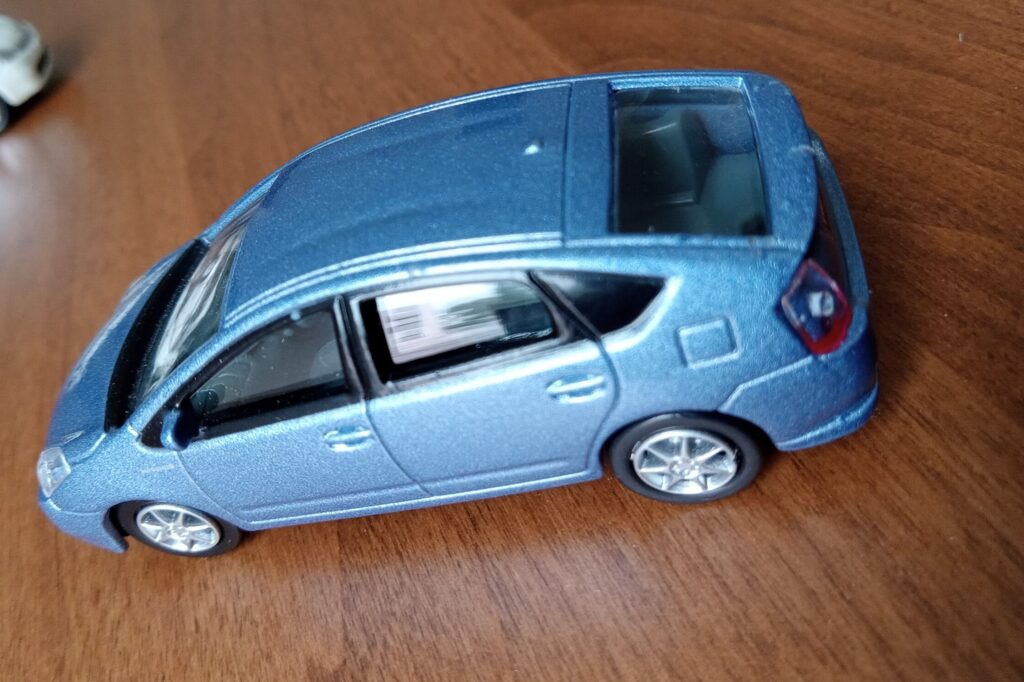
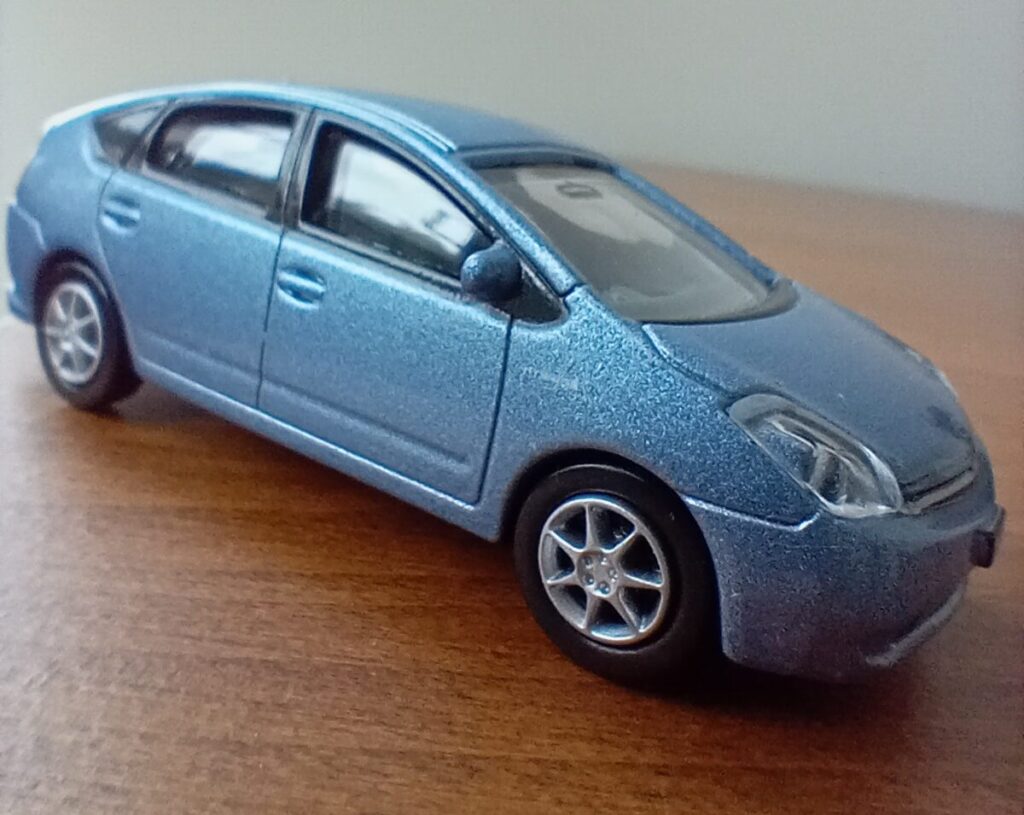
私と2代目プリウス:個人的なデザイン雑感
私にとっての2代目プリウスは、
『おおっ!! すごく長いホイールベース!』+
『屹立した、巨大なサイドボディーパネル』+
『スピード感がすごいルーフラインが、高い位置に』=2代目プリウス
『どこから見ても安定感と鋭い方向性が同居』
『特にリアクオーターヴューは絶品!!』
こんな感じです。
車高も高く、かなりのボディー・マス(量感)がありますが、ボディーサイドが堂々と切り立っている事と前方への方向性豊かなルーフラインによって、車全体が巨大な走る三角のブレードのように感じられます。
(車高が高いこと、車幅があまりないことをプラスに転化した潔いデザインです!!)
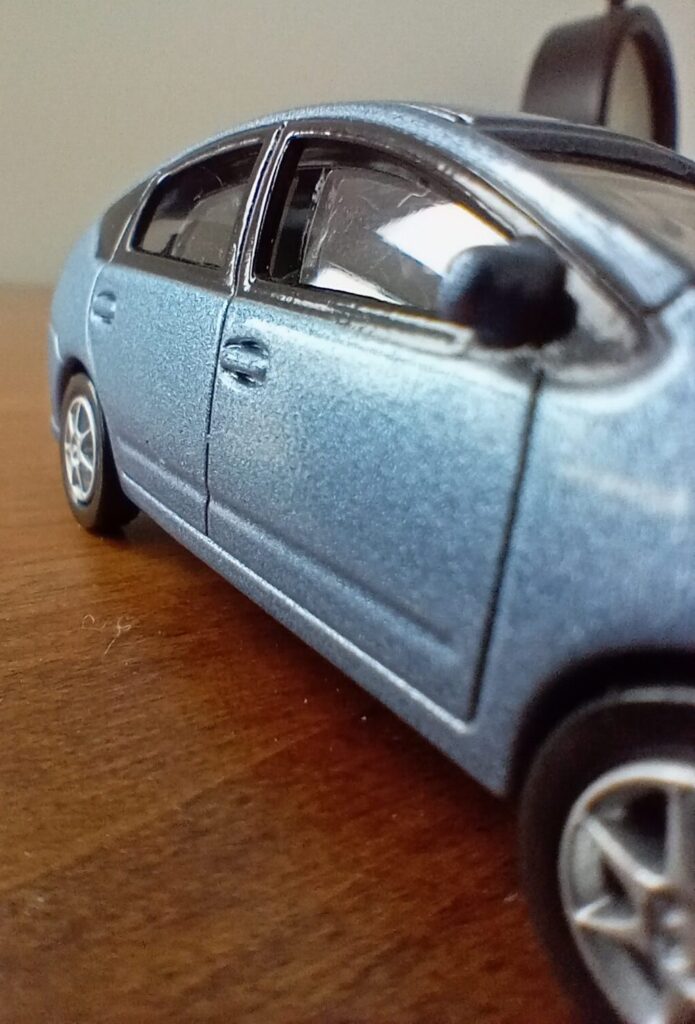
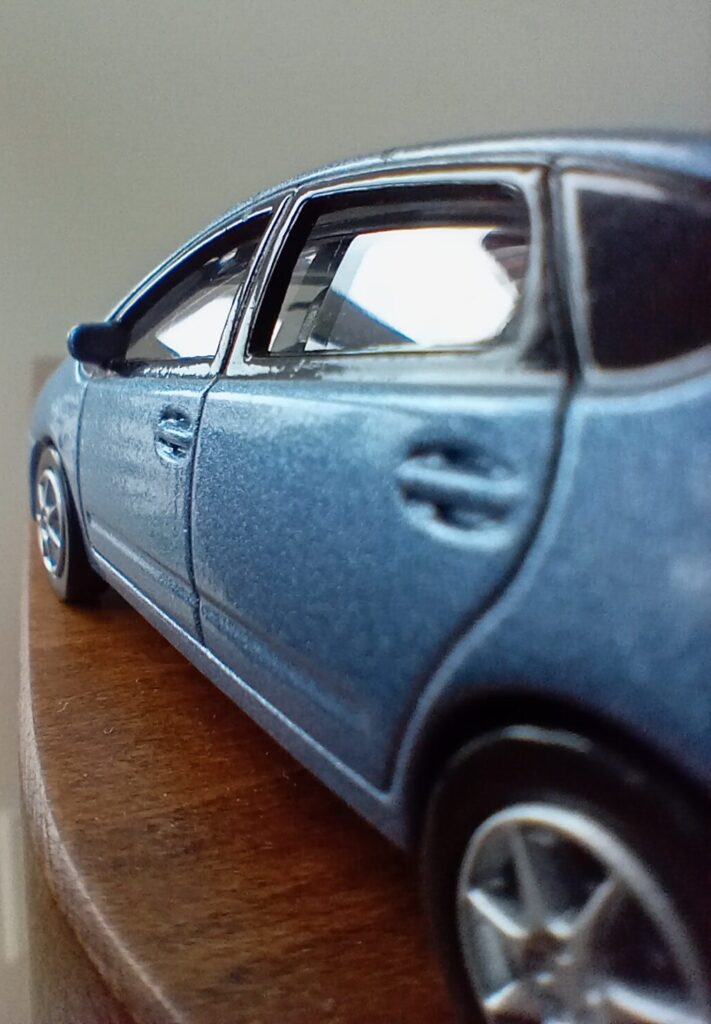
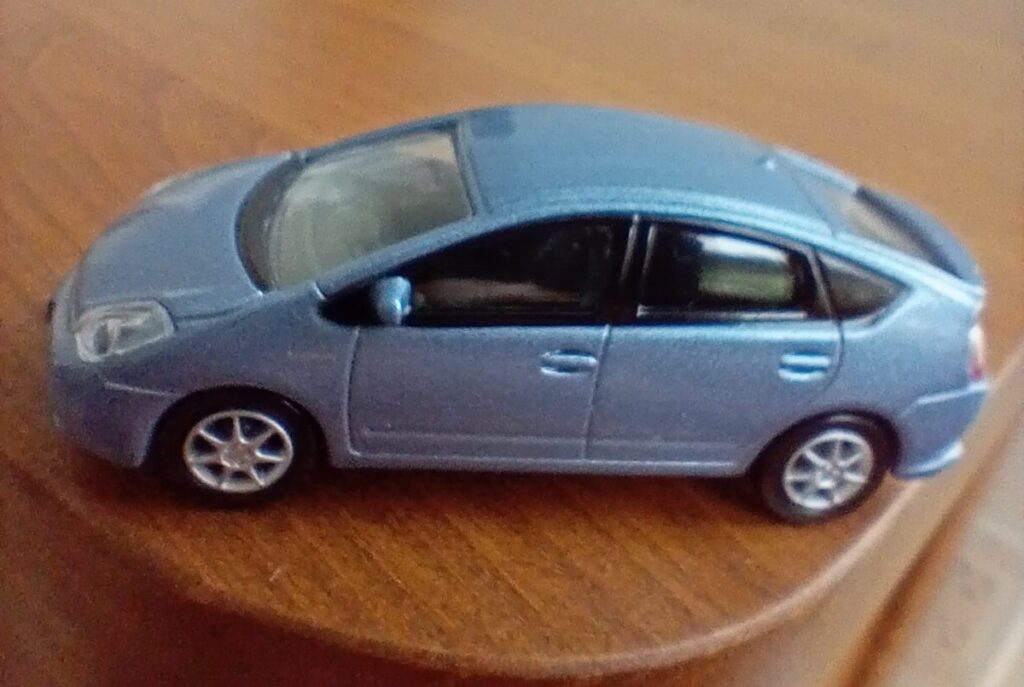
その他、こんな部分も好みです。
*ボンネット上にあるGM/アキュラ・デザイン的なセンターの折れ線面をバンパー近くの先端部の少し前で丸め、フロントエンドのイメージが極端にシャープなスポーツカー寄りになるのを避け、丸みを帯びた面とすることで、トヨタのロゴマークと一致させていますーーーー>勇気と余裕があるデザイン
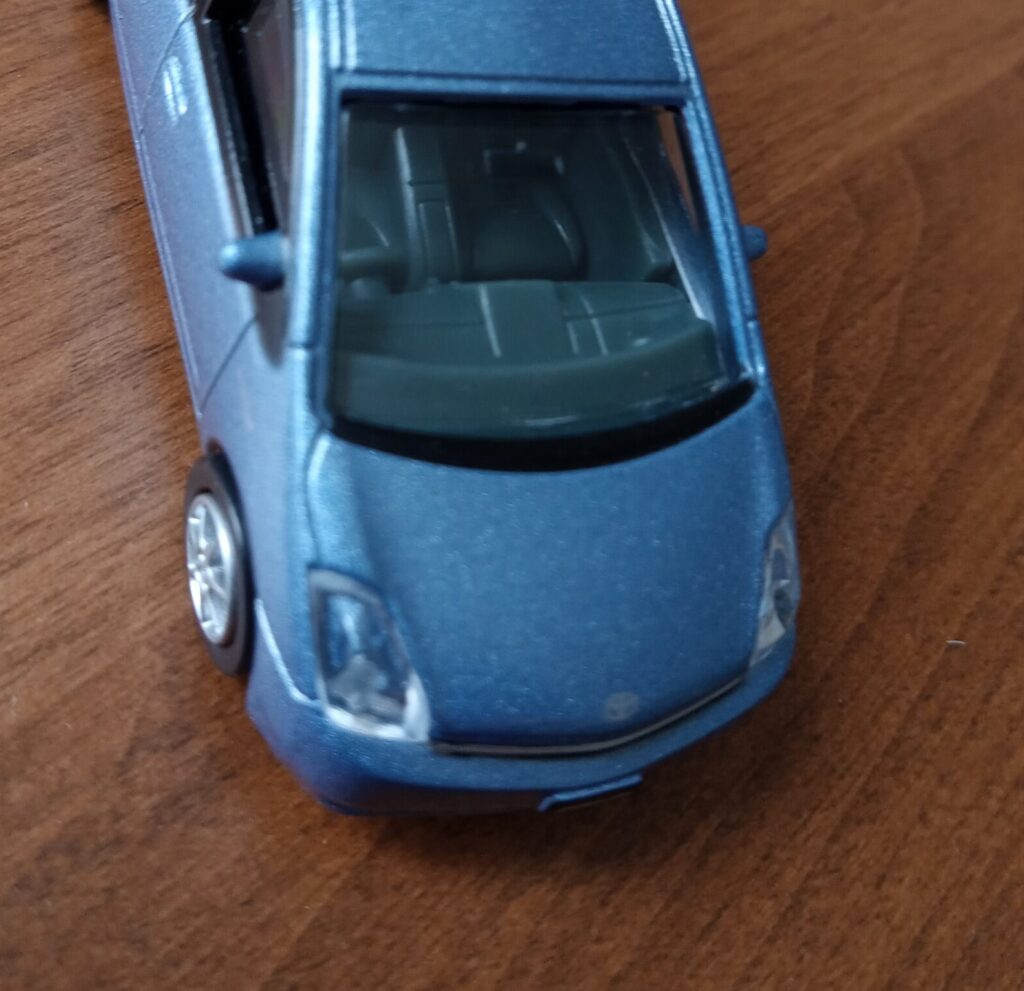
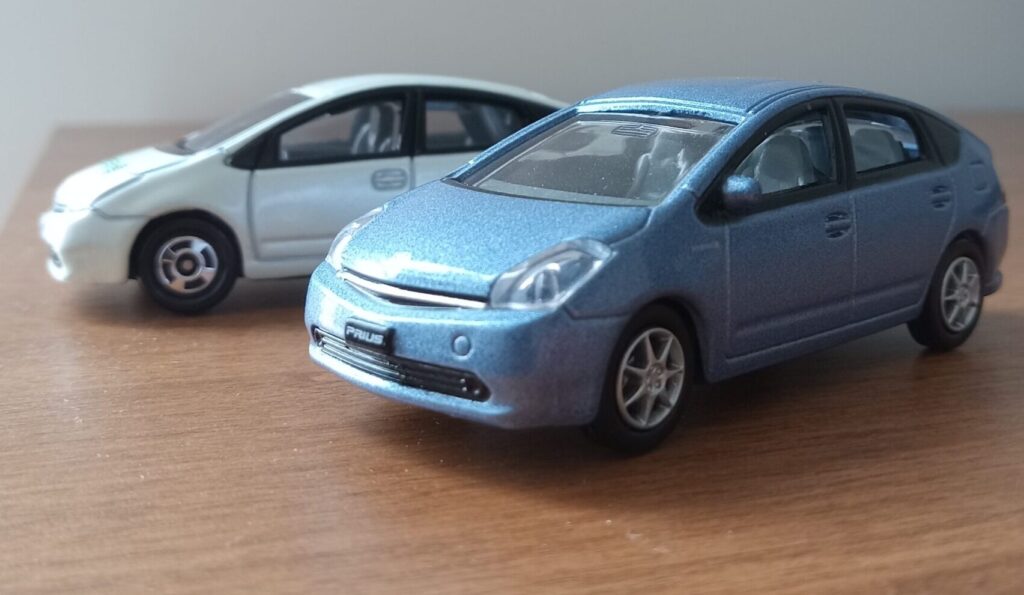
結論:今後50年の自動車のひな型の完成と、その消滅
よくよく考えてみますに、
現在の電気自動車の中心的存在といえる、テスラ3のパッケージはこの2代目プリウスにそっくりで、明らかにお手本にしていると見て間違いないと思います。
つまり、
*限られた全長の中で:(4.5m)
*ホイールベースを最大にとり:(2.7m以上)
*ファイアーウォールをできるだけ前進:(キャブ・フォアワード・デザインの復権?)
*全高をある程度高く:(1.5m以上)
*最小回転半径を小さく:(前輪の切れ角の最大化)
*乗員を高い位置に座らせるパッケージ:(広い空間の達成と乗り降りの便宜)
このような、未来の5人乗り乗用車の理想を追求した組み合わせを持つシャーシはそう負いそれど作れるものではありません。(福野礼一郎先生、談)

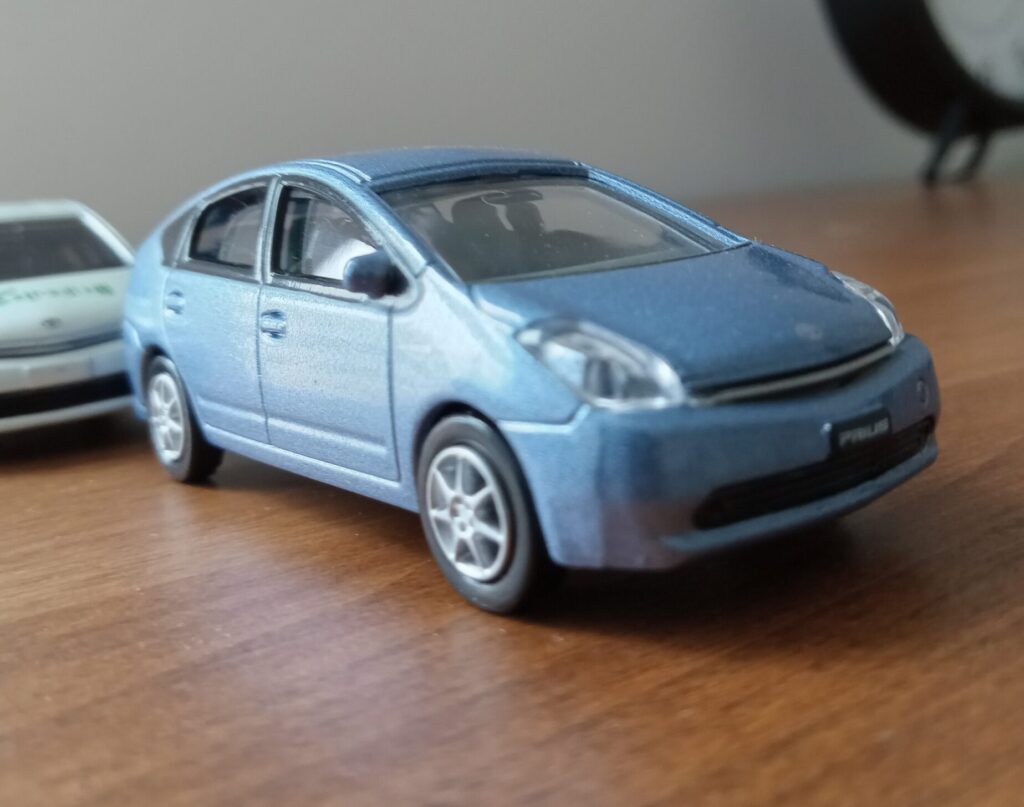
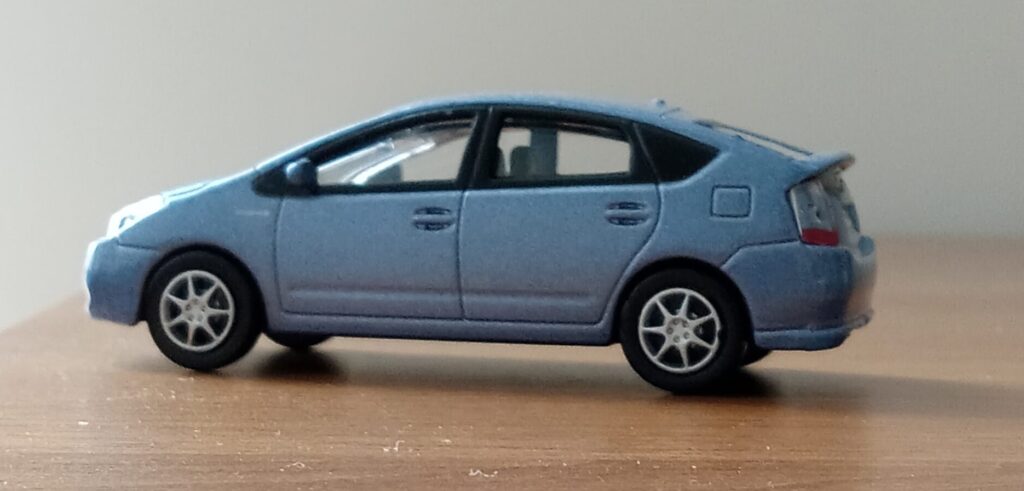
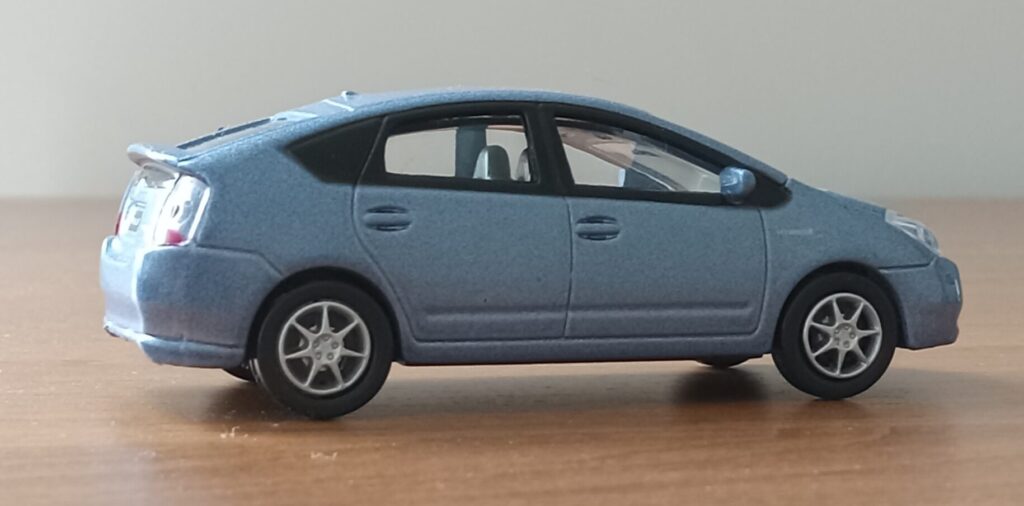
その意味で、
現在のプリウスが熟成とデータ収集が進んでいた2代目のシャーシの上に構築されていないのは、すさまじく残念です。
(低重心が売りの、前社長の道楽に付き合ったような、時代錯誤的なTNGAというシャーシほど無意味な投資は今後問題になるんじゃないでしょうか。)
SUV全盛時代、だれもが高い着座位置での操縦の快適さに目覚め始めているこの時期に、
『なぜ、わざわざ、低着座位置を持ってくるのでしょう?』
むしろ、電池の積載位置を賢く設計することで、高い着座位置と楽しい運動性能の両立こそが、トヨタに求められる方向性だと信じます。
少し横道にそれましたが、
私にとっての2代目プリウスは、
『清潔感』と
『知性あふれる』、
EV時代の先駆的傑作車
(=今後50年の乗用車のひな型)
となります。
私の好きなその他の未来車
では次に
このカテゴリー、
『先進的なパッケージに支えられた、機能と優美さの融合に成功した名車』
の他車についてリストアップしてみます。
*メルセデスベンツ Aクラス、1998年型 (シルバー)
(燃料電池の積載を見据えた、二重構造のシャーシデザインが秀逸)
*シトロエン2CV,1948年型 (淡い黄色に黒のキャンバストップ)
(機能性重視のミニマリストなボディーサイドの台形断面が逆に美しい)
*BMW ノイエ・クラッセ,3セリーズ (未発売)
(BMWの新時代を告げるにふさわしい台形断面の大きな上向き面が美しい、未来の名車)
*ミツビシ・アイ、2006年型 (銀メタ)
(軽自動車のミッドシップレイアウトが産んだ個性あふれる外観デザイン、トヨタ・プレビア以上の卵型がすごい)
*シボレー・ボルト,2017年型 (アイス・ブルー)
(MBのAクラス的なプロポーションに、歴代のGMデザインのエッセンスをいい意味で詰め込んだ、安定プロポーションと、濃いデザインの融合が秀逸--→私が現在所有中の愛車です)
以上となります。
次回は、私が個人的に手に入れたい車ナンバーワンのクルマ、
デザイン・ベスト10、堂々5位のホンダS660について考えてみたいです。
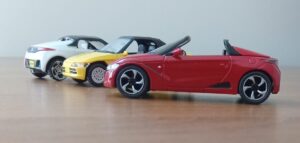
ーお楽しみにー
!!!!!!!!!!!!!!!!!!!!!! ENGLISH Translation!!!!!!!!!!!!!!!!!!!!!!!!!!!!!!!!!!!!!!!!!!!!
6th place: Toyota Prius (2nd generation) Onigiri design
For me, the 2nd generation Prius is not so much
“a triangular onigiri from the future”
as it is
“the owner of a perfect rear and three-quarter view.”
In other words,
“the older brother of the Honda CR-X I used to love.”
In that sense,
it was my beloved car for 15 years from 2005 to 2020,
and it’s still a car I’d love to drive again.
Every day I drove it, I’d get a kick out of the design from that angle whenever I approached my car from the rear side, and I’d can’t help but smile.
On the West Coast, I still occasionally encounter well-maintained second-generation Priuses on freeways, and the excitement of approaching them from behind remains intact.
(Paluck 1/60 Toyota Prius 10th Anniversary Edition)
Design Best 10 List
Here is my personal list of
the top 10 automotive designs.
10th place: BMW 507, 1956 ————————- (Silver + matching hardtop)
9th place: AM General Hummer H1, 1992 ———- (Military woodland camouflage)
8th place: MB 560 SEL, W126 sedan ————- (Dark navy and blue-gray two-tone)
7th place: Cadillac Eldorado, 1967 (Metallic blue with black leather top)
6th place: Toyota Prius, 2003 (2nd generation) —————————– (Light aqua)
5th place: Honda S660, 2015 —————— ————————– (White metallic)
4th place: Porsche 928, 1978 ————- (Light blue metallic with checkered interior)
3rd place: Citroën DS23, 1973 ———————— (Charcoal gray metallic)
2nd place: Lamborghini Countach LP400, 1974 —————— (Orange)
1st place: Austin-Healey 100/4 (BN/1), 1953 – (Ivory and dark blue two-tone)
Reasons for the award (from an objective perspective)
The second-generation Prius, which underwent a radical image change from the first-generation sedan type to a five-door hatchback style, thoroughly refined its aerodynamic performance to further mature the hybrid system. In addition, a thorough review of the platform was conducted, resulting in an interior space as large as that of Toyota’s top-of-the-line model in the US, the Avalon.
Specifically, it had the following
noteworthy design characteristics.
* Powerful + beautiful = triangular style: Triangle Monoframe
(Contributes to maximizing aerodynamic performance and interior space, as well as a unique sense of speed)
* Even by today’s standards, an ultra-advanced “standing” packaging design
(Long wheelbase, forward-shifted firewall, optimized battery placement)
——–> The result is an overall “universally appealing cohesiveness” that is highly
* The courage to treat the large windows and body sides as a continuous large surface
(A balance of large, delicate upward-facing surfaces and exquisite cutouts = accent lines, rarely seen except in commercial vehicles or the Citroën 2CV)
* Numerous intricate details
1. Double-bubble roof design —> Contributes to passenger headroom
2. Unique headlight position and shape
3. Boldly cut-off rear end “coda tronca” treatment —> Contributes to aerodynamics
2. In the side view,
“The position of the roof line’s peak and sense of speed”
(In the third and fifth generations, the peak’s position shifted backward, resulting in a lack of speed and a “sagging” appearance.)
My personal design impressions of the 2nd-generation Prius:
For me, the 2nd-generation Prius is:
“Wow!! Such a long wheelbase!” +
“Upright, massive side body panels” +
“A roof line with incredible speed at a high position” = 2nd-generation Prius
“Stability and sharp directionality coexist from any angle”
“Especially the rear quarter view is absolutely stunning!!”
That’s how it feels.
Despite its high ground clearance and substantial body mass, the sharp, upright body sides and the forward-oriented roofline give the entire vehicle the feel of a massive, moving triangular blade.
(A bold design that turns the high ground clearance and narrow width into advantages!!)
I also like these parts.
*The center crease on the hood, reminiscent of GM/Acura design, is rounded slightly before the front end near the bumper, avoiding an overly sharp sports car-like appearance and instead creating a curved surface that aligns with the Toyota logo—a design that exudes courage and confidence.
Conclusion: The completion of the prototype for the next 50 years of automobiles, and its disappearance
Upon careful consideration,
the packaging of the Tesla 3, which can be considered the central figure of current electric vehicles, is strikingly similar to the second-generation Prius, and it is clear that it was used as a model.
In other words,
* Within the limited overall length: (4.5m)
* Maximizing the wheelbase: (2.7m or more)
* Advancing the firewall as much as possible: (Revival of the cab-forward design?)
* Keeping the overall height relatively high: (1.5 meters or more)
* Minimizing the turning radius: (Maximizing the steering angle of the front wheels)
* Seating passengers in a high position: (achieving a spacious interior and ease of entry/exit)
A chassis with such a combination of features, pursuing the ideal of a future five-passenger passenger car, is not something that can be easily created.
In that sense,
it is incredibly disappointing that the current Prius is not built on the second-generation chassis, which had undergone maturation and data collection.
(The TNGA chassis, which boasts a low center of gravity and seems like a relic of the past, is a meaningless investment that will likely become a problem in the future.)
In the SUV boom era, when everyone is beginning to realize the comfort of driving from a high seating position,
“Why insist on a low seating position?”
Instead, I believe that Toyota should focus on intelligently designing the battery placement to achieve both a high seating position and enjoyable driving performance.
Getting slightly off-topic,
for me, the second-generation Prius is
a “clean” and
“intelligent,”
pioneering masterpiece of the EV era
(= the prototype for passenger cars for the next 50 years).
My other favorite future cars
Next,
in this category,
‘classic cars that successfully blend functionality and elegance supported by advanced packaging,’
I will list other vehicles.
* Mercedes-Benz A-Class, 1998 model (Silver)
(The dual-structure chassis design, designed with fuel cell integration in mind, is outstanding)
* Citroën 2CV, 1948 model (Light yellow with a black canvas top)
(The minimalist trapezoidal cross-section of the body sides, prioritizing functionality, is paradoxically beautiful)
* BMW Neue Klasse, 3 Series (Unreleased)
(The large upward-facing trapezoidal cross-section, befitting the dawn of a new era for BMW, is beautiful—a future classic)
* Mitsubishi i, 2006 model (Silver metallic)
(The mid-ship layout of a compact car has produced a distinctive exterior design, with an egg-shaped silhouette even more striking than the Toyota Previa)
* Chevrolet Bolt, 2017 model (Ice Blue)
(Combining the proportions of the Mercedes-Benz A-Class with the essence of GM’s design heritage, this model seamlessly blends stable proportions with bold design—it’s my current favorite vehicle.)
That concludes this list.
Next time, I’d like to discuss the Honda S660, which ranks fifth in my personal top 10 design list and is the vehicle I most desire to own.
—Stay tuned—
Translated with DeepL.com (free version)
これはCTAサンプルです。
内容を編集するか削除してください。
